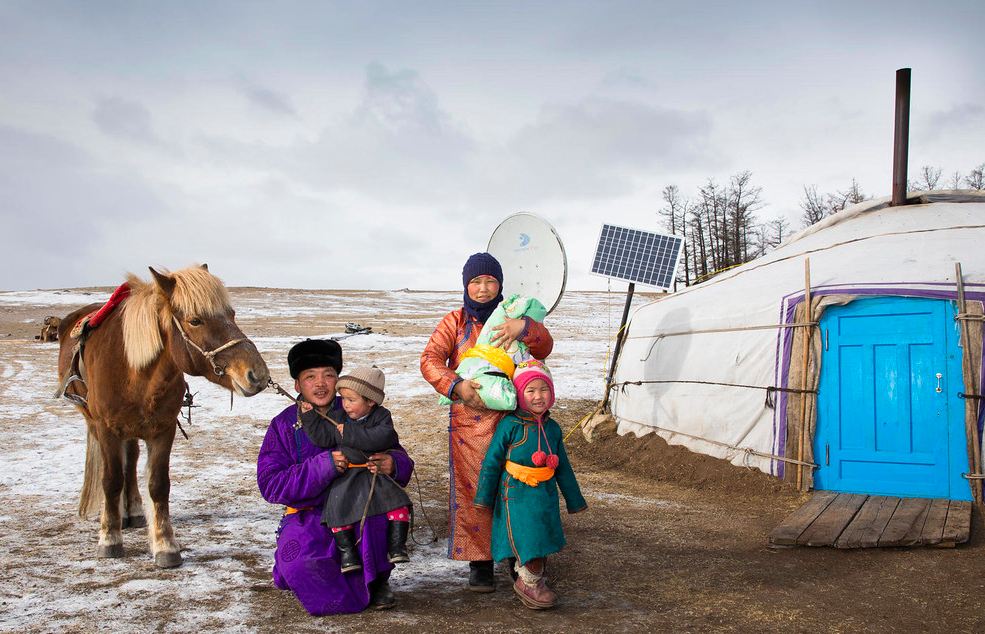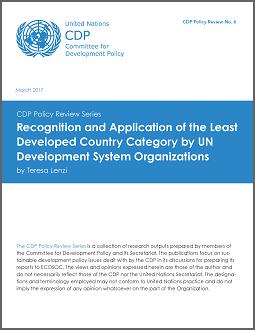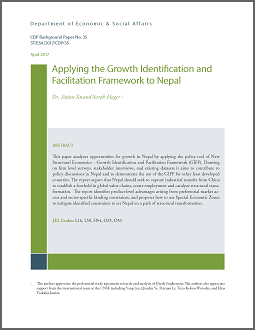Document_CDP: LDC Resources
LDC Resources
11 May 2018
Report of the Committee for Development Policy (E/2018/33, Supplement No. 13) عربي, 中文, English, Français, Русский, Español CDP excerpts on the report by theme Leaving no one behind Monitoring of countries that are graduating or have graduated from the ...
21 March 2018
Bhutan (including Bhutan's response to the impact assessment and DESA's reply) Kiribati Nepal (including Nepal's response to the impact assessment) São Tomé and Príncipe Solomon Islands (including Solomon Islands' response to the impact assessment) Tim ...
21 March 2018
Bhutan Kiribati Note by UNSD on the treatment of fishing licenses Nepal São Tomé and Príncipe Solomon Islands Timor-Leste
22 May 2017
CDP Policy Review No. 6 By Teresa Lenzi This paper analyzes the advantages that LDCs have derived from the various LDC-specific international support measures due to their LDC status. It identifies the reasons why some UN development system organizati ...
10 May 2017
CDP Background Paper No. 35 By Dr. Jiajun Xu and Sarah Hager This paper analyzes opportunities for growth in Nepal by applying the policy tool of New Structural Economics – Growth Identification and Facilitation Framework (GIFF). Drawing on firm level ...
17 April 2017
Report of the Committee for Development Policy (E/2017/33, Supplement No. 13) عربي, 中文, English, Français, Русский, Español CDP excerpts on the report by theme Lessons learned in developing productive capacities from countries graduating and graduated ...
12 April 2017
The paper starts with an overview of Ethiopia’s economic growth and the change in the domestic economic structure. The manufacturing sector is seen as the success of Ethiopia’s Growth, and its development to a large extent the product of an activist developmental state. The paper then examines growth and diversification of exports and the country’s recent efforts to effectively exploit its natural resources. An analysis of public and private investment and the underlying allocation of financial resources finds that a recent upturn in domestic investment has been financed largely by foreign aid, and that private financing remains too low. Finally, the paper addresses educational attainment, arguing that Ethiopia has some distance to go in its attempts to close the large human capital gap relative to other low-income countries.






Follow Us